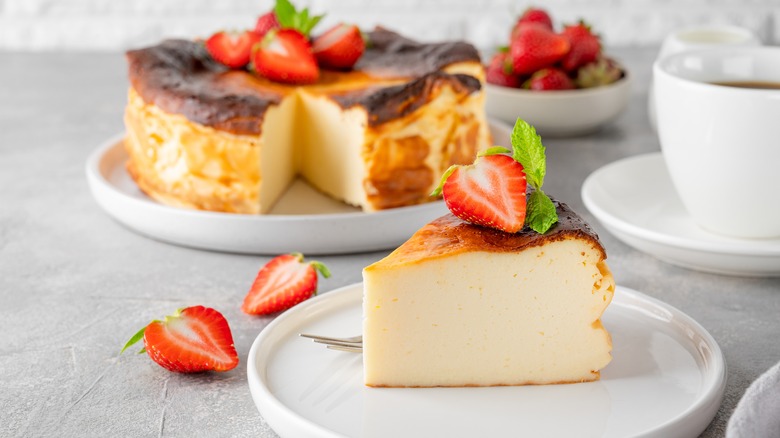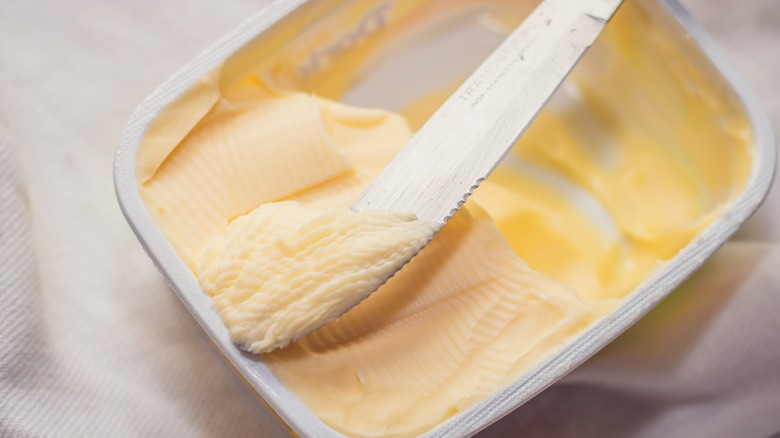How Low-Fat Ingredients Can Sometimes Affect Your Recipe
If you're trying to cut back on the fat content in a recipe — especially for those tasty desserts packed with butter, shortening, and cream cheese — it can be tempting to sub out a few of the key ingredients with low-fat versions. But keep in mind that all the cream cheese in your cheesecake serves a purpose that goes beyond lending a rich, slightly tangy flavor to your dessert. Often in baking, fat is a key element that can make or break the texture of your final product, and if you substitute a low-fat version of your ingredient, the consistency likely won't be the same.
Take the cheesecake above, for example. It is possible to make this dessert with a lower-fat cream cheese, but you'll need to make adjustments to the entire recipe to do so. The substitution has about half as much fat, a lot more moisture, and potentially more stabilizers than the standard version, so if you use it, your cheesecake will come out much more liquidy than intended. Plus, it likely won't taste as rich as you're used to.
How to use lower fat ingredients in baking
If you are trying to use a lower-fat cream cheese in your cheesecake, you may want to simply go with a recipe that uses the ingredient — which typically means the creator took the extra moisture and lower fat into account. However, you may get similar results using Neufchâtel, which has less fat than cream cheese but can be swapped in a 1:1 ratio. The same goes for any other baked good that deploys the ingredient, like cookies or brownies.
But when it comes to other fats, it's not always safe to assume that you can make a 1:1 swap with a lower-fat version. For instance, while you can sometimes replace butter with a leaner type, the approximately 80% milkfat and 15% water in the former is ideal to concentrate flavors and create texture, according to Baking Sense. If you do use the replacement, try to go for butter with at least 60% fat to preserve your dessert's consistency. And while you may prefer margarine over shortening, as it is lower in fat, the latter can help emulsify the liquids in your recipe, while the former can't. For every cup of shortening your dessert calls for, add in an extra tablespoon of margarine if you're making the swap — but just like with the other fats mentioned here, you may be missing out on key qualities in your baked goods by using lower-fat ingredients.

